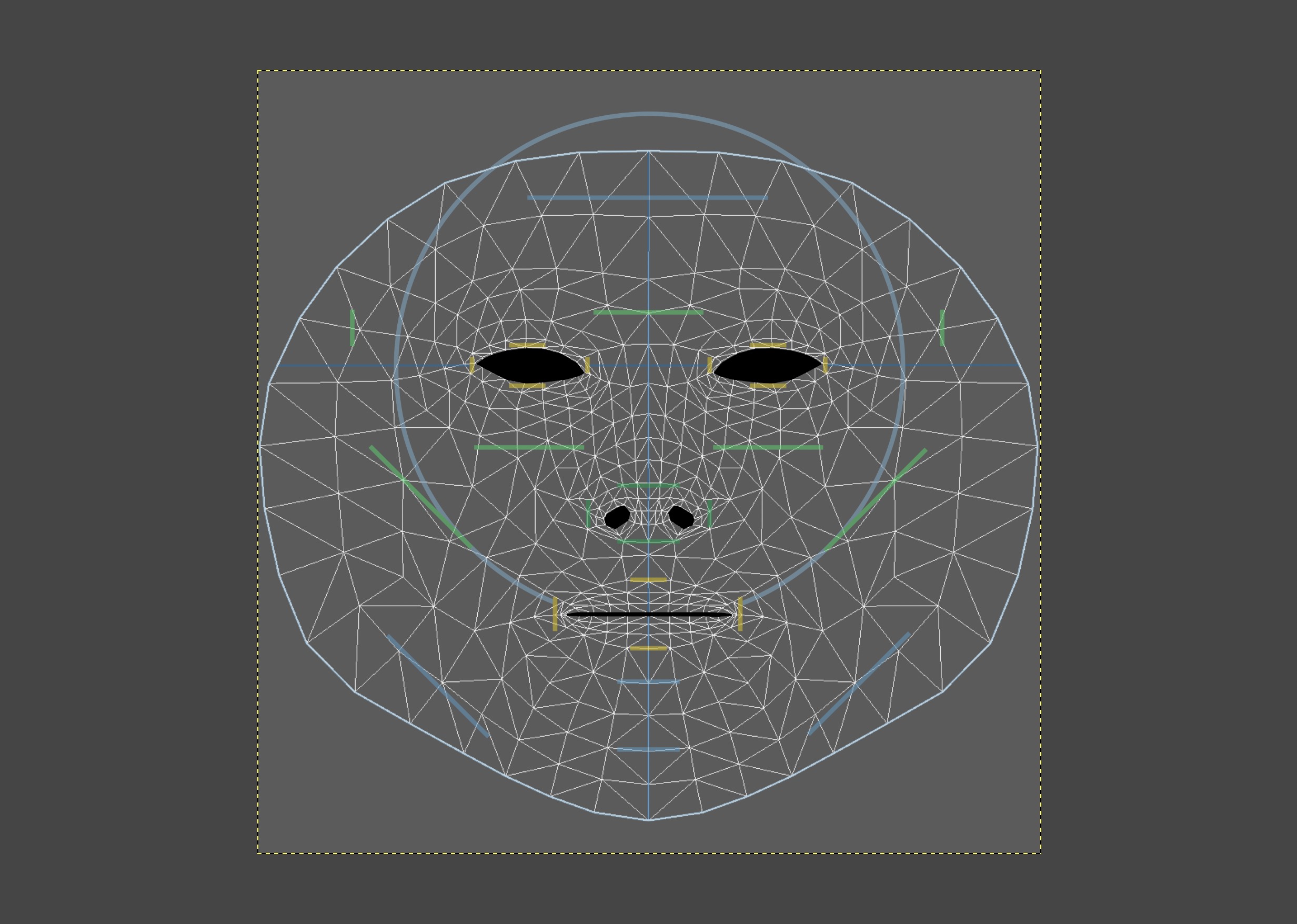Page Summary
-
Augmented Faces in ARCore uses custom 3D models and textures (
.fbxfiles) overlaid on detected faces. -
ARCore provides a
canonical_face_mesh.fbxandcanonical_face_mesh.psdfile to aid in creating these custom assets. -
Artists should use the provided
.psdfile as a guide to align textures with facial features and understand UV mapping. -
Exported
.fbxfiles should adhere to specific settings, including FBX format, axis, scale, and geometry settings, for compatibility with ARCore. -
Custom meshes should be skinned to designated bones (
NOSE_TIP,FOREHEAD_RIGHT,FOREHEAD_LEFT) and organized under the 'asset' node in the hierarchy.
To implement Augmented Faces, you need customized textures and models for
overlaying on identified face meshes. These assets are created by artists
ahead of time in 3D modeling and animation software, and exported as *.fbx
files.
The Sceneform SDK for Android ships with a canonical_face_mesh.fbx file and a
canonical_face_mesh.psd file to help artists create assets that will overlay
properly onto faces detected by ARCore. These files can be found in the
assets folder.
Using the *.fbx file to create assets
The *.fbx file contains the face mesh topology, UV texture coordinates, and
rig that define the supported facial regions provided for creating and
attaching assets. To ensure they're compatible with ARCore,*.fbx files should
be saved using supported settings. You can then import these files into your
project as *.sfb files.
This file contains a reference facemesh that should not be exported as part of
the final *.fbx. ARCore will generate and update a separate face mesh at
runtime.
Using the *.psd file to create assets
The .psd face mesh reference texture is used to see how a texture that an
artist creates lines up with a user's facial features at runtime. It includes
four layers:
- Mask: Shows where the eyes, nostrils, and mouth are located in the texture.
- Lines: Guidelines that show how a user's facial features line up with a texture during runtime.
- UVs: Represents triangulation of the 468 point face texture mesh.
- Background: A neutral gray background layer to make the other three components visually clear.
If you modify the *.psd file, you should see your changes as soon as you
export.
FBX asset format and requirements
We recommend and support the following settings for *.fbx files exported from
modeling and animation software.
File format: FBX 2016/2017 or later
Axis conversion: Up axis is Y
Scale factor: Centimeters
Required geometry settings:
- Smoothing groups
- Smooth mesh
- Referenced asset content
Recommended geometry settings:
- Tangents and binormals
- Triangulate
- NURBS
Animation: enabled
Deformed models settings:
- Deformed models
- Skins
Customizing the canonical face mesh
If models and textures are being created using the
assets/canonical_face_mesh.fbx included in the SDK, these settings are also
required when exporting *.fbx files:
Make sure the any custom meshes are skinned to the associated bones or regions.
Use the following hierarchy:
asset |__root | |__NOSE_TIP | |__FOREHEAD_RIGHT | |__FOREHEAD_LEFT |__facemesh <-- for reference |__ <-- place additional custom 3D meshes here
Do not export the included
facemeshmodel. This mesh is for reference only. ARCore will create a separate face mesh at runtime. Use the UVs infacemeshas a reference when creating custom face mesh textures.Place custom meshes as children of the
assetnode.Use of namespaces is supported.
The asset contains four bones consisting of
rootand three regions:NOSE_TIP,FOREHEAD_RIGHT, andFOREHEAD_LEFT. Do not change the names of these bones.
